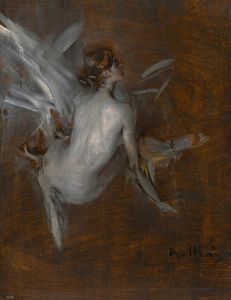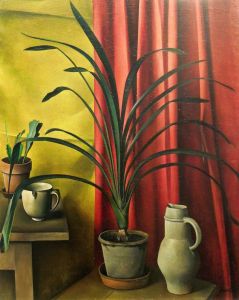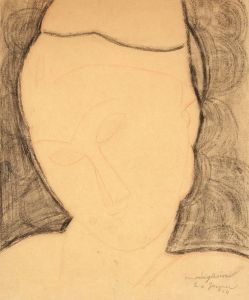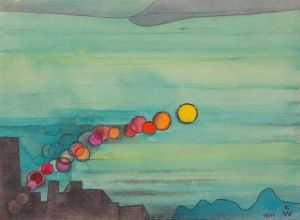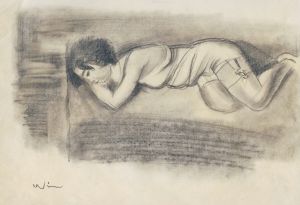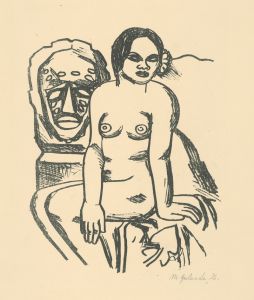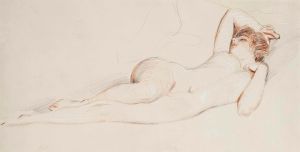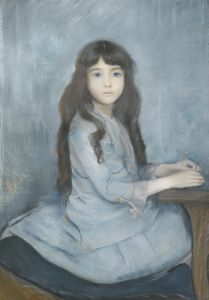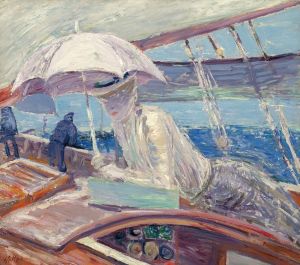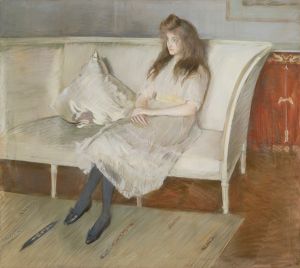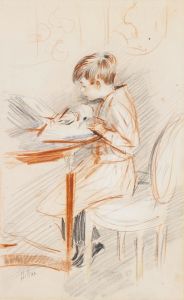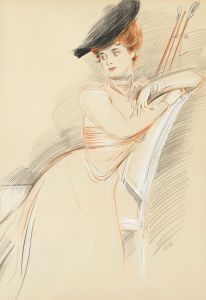
Standing Nude
A hand-painted replica of Paul César Helleu’s masterpiece Standing Nude, meticulously crafted by professional artists to capture the true essence of the original. Each piece is created with museum-quality canvas and rare mineral pigments, carefully painted by experienced artists with delicate brushstrokes and rich, layered colors to perfectly recreate the texture of the original artwork. Unlike machine-printed reproductions, this hand-painted version brings the painting to life, infused with the artist’s emotions and skill in every stroke. Whether for personal collection or home decoration, it instantly elevates the artistic atmosphere of any space.
Paul César Helleu was a French artist known for his portraits of beautiful society women, and he worked in various mediums including painting, drawing, and printmaking. One of his notable works is "Standing Nude," which exemplifies his skill in capturing the elegance and grace of the female form. Helleu's work is often associated with the Belle Époque period, a time characterized by cultural flourishing in France and across Europe.
"Standing Nude" is a testament to Helleu's ability to convey the delicate beauty and poise of his subjects. Although specific details about the creation date and the current location of this particular work are not widely documented, it is consistent with Helleu's style that often featured women in relaxed, natural poses. His nudes are celebrated for their subtlety and the way they capture the softness of the skin and the fluidity of the human form.
Helleu was a contemporary of artists like John Singer Sargent and James McNeill Whistler, and he shared their interest in portraying the refined elegance of the upper classes. Unlike some of his contemporaries who focused on more dramatic or impressionistic styles, Helleu's work is noted for its clarity and precision. His technique often involved the use of drypoint, a printmaking process that allowed him to create fine lines and delicate shading, which are evident in his depictions of nudes.
The artist's fascination with the female form was not merely aesthetic; it was also personal. Helleu was known to have a close relationship with his wife, Alice, who was a frequent subject in his work. This personal connection often lent a sense of intimacy and warmth to his portraits and nudes, distinguishing them from the more detached or idealized representations common in academic art of the time.
Helleu's contribution to art extends beyond his paintings and drawings. He was also an influential figure in the world of fashion illustration, and his work appeared in publications like "Gazette du Bon Ton," a leading fashion magazine of the early 20th century. His ability to capture the essence of his subjects with elegance and sophistication made him a sought-after portraitist among the elite of Parisian society.
While "Standing Nude" may not be as widely recognized as some of Helleu's other works, it remains an important example of his artistic legacy. The piece reflects his mastery of form and his dedication to portraying beauty in its most natural state. Helleu's work continues to be appreciated for its technical skill and its ability to evoke the refined sensibilities of a bygone era.
In summary, Paul César Helleu's "Standing Nude" is a fine representation of his artistic style and his focus on the elegance of the female form. Though specific details about this work are limited, it is consistent with the themes and techniques that define Helleu's contribution to the art world during the Belle Époque. His legacy endures through his portraits and nudes, which continue to be celebrated for their beauty and grace.





